Do you shiver in your room in winter and get super sweaty in summer? This might be because your house is not air sealed. It requires pepper insulation and ventilation to ensure it is, which requires air sealing.
Therefore, if you wish to learn the best air-sealing techniques, continue reading this article and find the best ways to do so.
How To Air Seal Your Home?
If you have decided to do a total air sealing of your house, a few steps need to be followed. To air seal your house step by step and area by area, you need to:
Step 1. Assessment
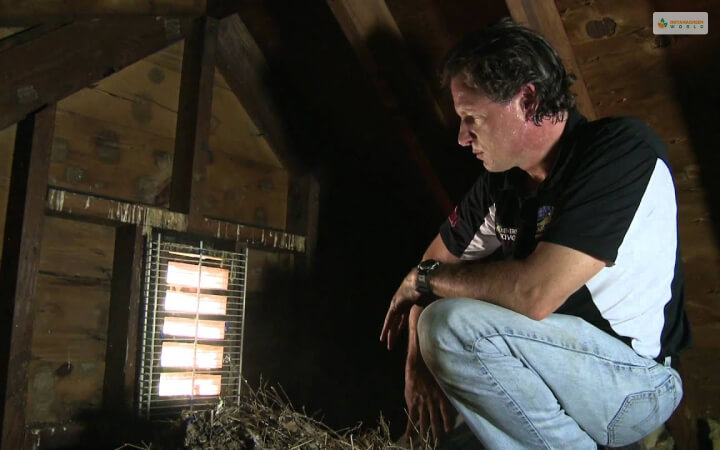
The first step towards air sealing your home that you need to take is to assess your home for leaks. Here, you need to check every nook and cranny of your house to identify all the spots for air leakage. However, before you can “seal the deal,” you need to understand the deal here.
You can use various tools like a laser thermometer to detect air leaks in homes. You can use this to detect places around your house where temperature changes rapidly, especially during winter.
You can also use traditional ways to detect air leaks like a candle. This is the best way to detect leaks in windows and door hinges. Hold the candle near these areas and just wait. If you see it flicker or blow out, it means there is a leak.
The most common places where air leakages tend to happen the most are:
- Switch plates.
- Phone lines.
- Chimneys and fireplaces.
- Door and window frames.
- Floorboards.
- Ceiling fans.
- Basement doors.
- Attic doors.
- Wall-mounted AC Units.
- Vents and baseboards.
Step 2. Seal The Attic
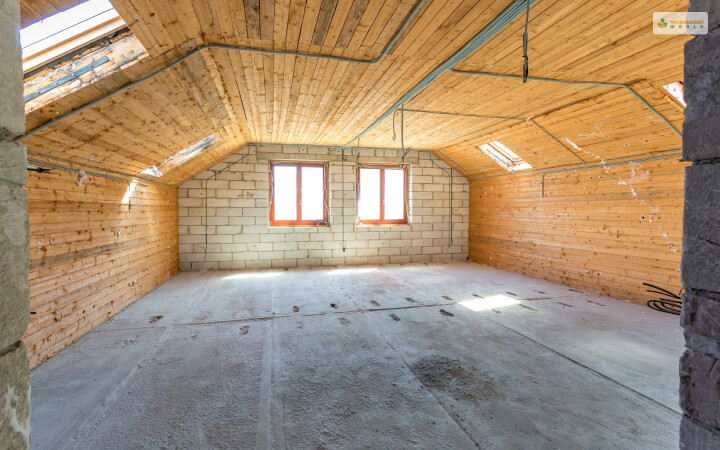
The attic is one of the most common places where a lot of air leakage occurs. This is why you need to prioritize air sealing up there. This is because most outlets for electrical wirings in your rooms go up to the attic to converge. This creates lots of scope for air to leak out from these holes. This also includes small solar panels you might have fit on your terrace.
If you wish to learn how to maintain humidity in the room, you can start by air-sealing your attic. You can do so by blocking leakages using a foam spray. You can also use this for windows and door hinges as well.
Step 3. Seal Your Basement
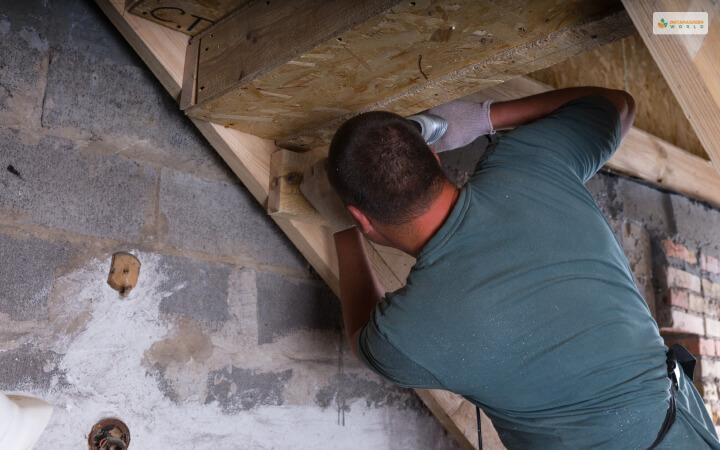
Our basement might be a scary place to head down to. This is dark and gloomy, with a musty smell. Air leakages are common because of HVAC systems, heating ducts, drying vents, electrical wiring, and lots more.
Because of such leakages, it’s important to learn how to maintain room temperature in rooms directly above your basement. Therefore, air sealing your basement will make it warm and your rooms cold in summer (and vice versa in winter).
Step 4. Exterior Air Sealing
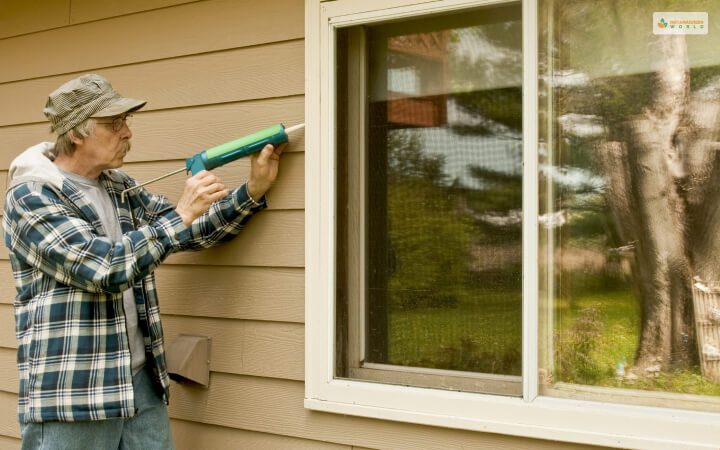
When it comes to exterior air sealing, chimneys and fireplaces are the first places you need to seal. In these places, cracks and more can appear over time which can cause air leakage. Air sealing these places will ensure that no air passes through, helping you maintain the room’s temperature.
Various sidings and other areas of chimneys where structures collide can lead to air leakages. Therefore, if you are weather-sealing these places, do so carefully since these cracks can be pretty big. However, you will only see a portion of these cracks on the inside, making it difficult to assess.
Step 5. Interior Air Sealing

Windows are the most susceptible areas when it comes to interior air leakages. Therefore, air-sealing your windows tightly is a must in all homes. This is mostly because air can leak from the sides of the windows, especially near hinges.
Here, you can use foam gaskets and foam sprays to seal up any small leaks that can appear on windows and doors. Also, ensure no gap is left between the floor and the bottom of your door. This is one of the most overlooked air leaks.
What Are The Best Air Sealing Techniques For Your Home?
Some of the best air-sealing techniques that professionals use are:
1. Caulking
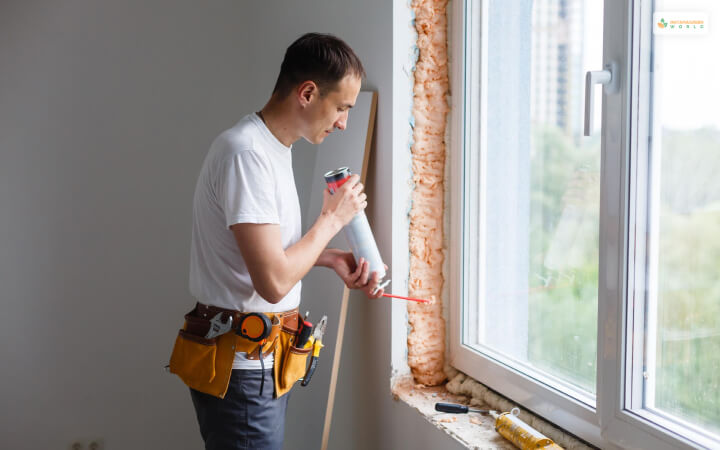
Caulking refers to using caulk to seal air leaks near doors and windows. Caulk is a material that is not wider than a quarter of an inch. It is typically used in stationary objects such as faucets, water pipes, plumbing fixtures, ceiling fixtures, and bathtubs.
2. Weatherstripping
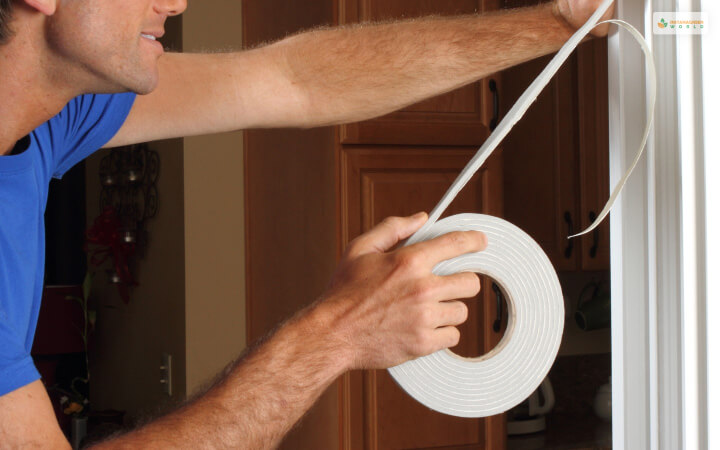
As the name suggests, weatherstripping is the technique of applying weather strips for weather sealing. Similar to the way caulk is used for stationary objects, you use this to seal moving objects. For example, these strips are used in air-sealing doors and windows.
3. Insulation

DDC room pressure should be maintained – always. Therefore, to ensure that it is maintained, room insulation is necessary. To do so, professionals make use of reflective insulation and radiant barriers. Here, radiant heat is reduced by making reflective barriers come in contact with the open space filled with air.
4. Ventilation

Professionals make use of three types of ventilation systems for air sealing. These include:
- Natural Ventilation: While most know natural ventilation as windows, cracks on walls can do the same too. They need to be air sealed to maintain room temperature.
- Spot Ventilation: Spot ventilation includes specialized exhaust and fans attached to rooms. This includes exhaust fans in bathrooms and chimneys in kitchens.
- Whole House Ventilation: This refers to central air conditioning and ventilation.
FAQ (Frequently Asked Questions)
The answers to various questions related to air sealing asked by people on Google are:
Ans – No, air sealing will not make your room stuffy and make it difficult for you to breathe. It’s simply done to maintain room temperatures and control moisture.
Ans – Yes, you can air-seal your house by yourself if you know where to look for and what to look for. However, most will recommend hiring professionals.
Ans – It can cost anywhere between $650 to $2,400 to air-seal your house. For example, a national; estimate for air sealing a 1,500-square-foot house will cost between $1,500.
Seal It Before It Leaks
Air sealing your house is necessary because it helps regulate room temperature and interior moisture. This is necessary to keep your house cool in summer and warm in winter. To do so, you need to air-seal areas like your basement, attic, doors, windows, and lots more.
Professionals use air sealing techniques like caulking and weatherstripping to ensure that you stay in your house comfortably.
READ MORE:












